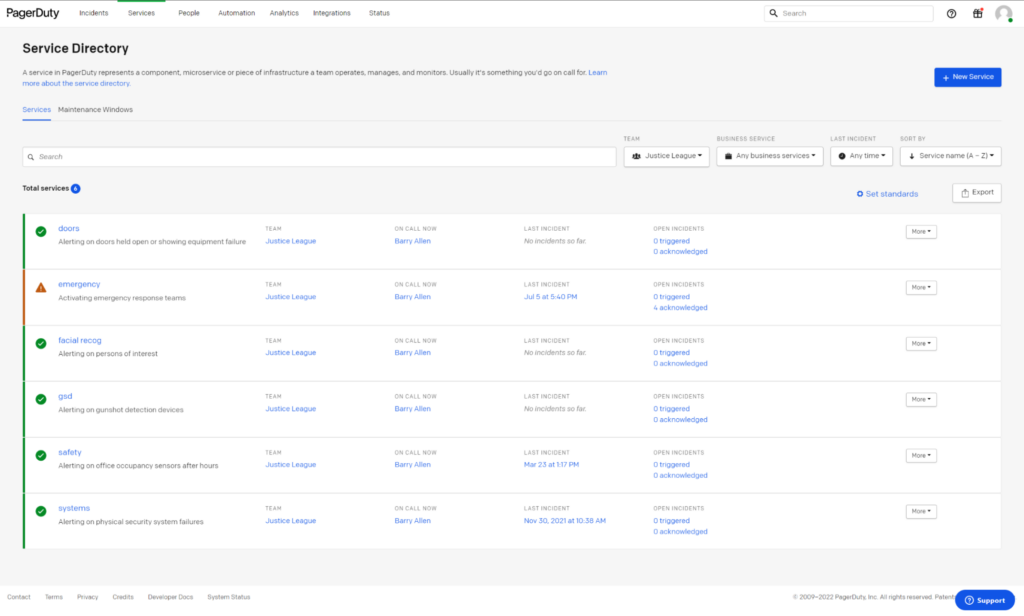- PagerDuty /
- Blog /
- Automation /
- PagerDuty’s Global Preparedness Month Returns: Securing our hybrid workplaces from emerging threats
Blog
PagerDuty’s Global Preparedness Month Returns: Securing our hybrid workplaces from emerging threats
The world remains increasingly complex. Threats from bad actors continue to disrupt our societies, dominate news cycles and impact our lives in many ways. COVID-19 taught us a few lessons about planning for the unexpected and at the same time led many to reconsider where they choose to work. With hybridized work continuing to be the de facto mode of work for many, professionals tasked with crisis response and physical security management are faced with serious challenges now that a majority of us are no longer working under one roof with one set of safety protocols.
PagerDuty operates around the world and around the clock so our 24×7 operation to keep Dutonians safe starts by enabling every employee through training, knowledge-sharing and effective tools so they can take action. Global Preparedness Month is our World Cup of employee safety where we bring all of our enablement activities home. It’s interactive, cross-functional, fun and endorsed by our Senior Leadership.
In this blog, we’ll cover how we prepare our teams for disaster and how we use PagerDuty internally for our “Harden the Target” initiative aimed at addressing the gaps in critical physical security events in the hybridized world.
Orchestrating in real-time with PagerDuty
When facing a critical breach or outage in physical security systems, teams need to understand the where and when in real-time. Let’s face it, humans can’t monitor multiple, concurrent critical physical security events as well as machines. Applying the principles of digital operations with real-time alerting and automation is key to better insights and actionable information. PagerDuty’s capabilities help us do just this and also serve as a force multiplier.
We found that consolidating on the PagerDuty platform gives us a more thorough common operating picture to respond to critical events as they unfold across different crisis response and physical security systems. A 1:1 relationship between our configured services and our critical physical security event types gives us increased visibility to what is happening and decreases our mean time to respond to or interrupt potentially harmful activity. The platform’s machine learning and intelligent grouping capabilities give us additional intel for trend and pattern recognition such as repeated failed access attempts or the frequency of equipment outages.

This use case layers physical security management best practices and FEMA’s Area Command over PagerDuty’s traditional incident response. This setup acts as our virtual Global Security Operations Center (GSOC). PagerDuty’s 650+ integrations (e.g., Slack, Teams, Zoom, etc.), email clients and API ensure that we can ingest crucial event information from virtually any physical security, threat intelligence or status monitoring system, and do something timely with that data.
Through the platform, we can orchestrate alerts to response teams, set off audible alarms for our staff or run automated response plays for contract security teams using third party video analytics. PagerDuty ensures a critical physical security event does not go unnoticed and escalates to the right team at the right time.
Practice keeps us primed for response
Throughout September, we engage our employees with emergency preparedness activities such as weekly educational themes, volunteer activities in partnership with PD.org and gamification like building your best-looking disaster kit or our disaster movie trivia. #stayready is our running theme and getting our workforce ready to respond to a major natural disaster such as an earthquake or a man-made disaster such as an active shooter event is our focal point. We also look to have some fun together and pick up key learnings from each other.
We’re running systems tests and drills to lock in those response habits with our emergency communications tests and The Great ShakeOut earthquake drill all while coordinating on the PagerDuty platform. Through this process we keep our on call schedules up to date and use the on-call readiness tool to confirm everyone is set up for time sensitive alerts as Incident Commanders. The end result is captured in post-mortems and ensures that our team activations, incident command and escalation protocols are correctly programmed in the platform and continue to reflect the needs of the evolving threat landscape.At PagerDuty, we’re empowering teams to build the future and with our platform configured for critical physical security events, we’ve got another tool in our toolbox to stay ahead of the emerging threats to our people and business. If you want to learn how PagerDuty can help your organization respond to the many threats posed by bad actors and serve as a force multiplier or as your virtual Global Security Operations Center (GSOC), please sign up for a free trial.


